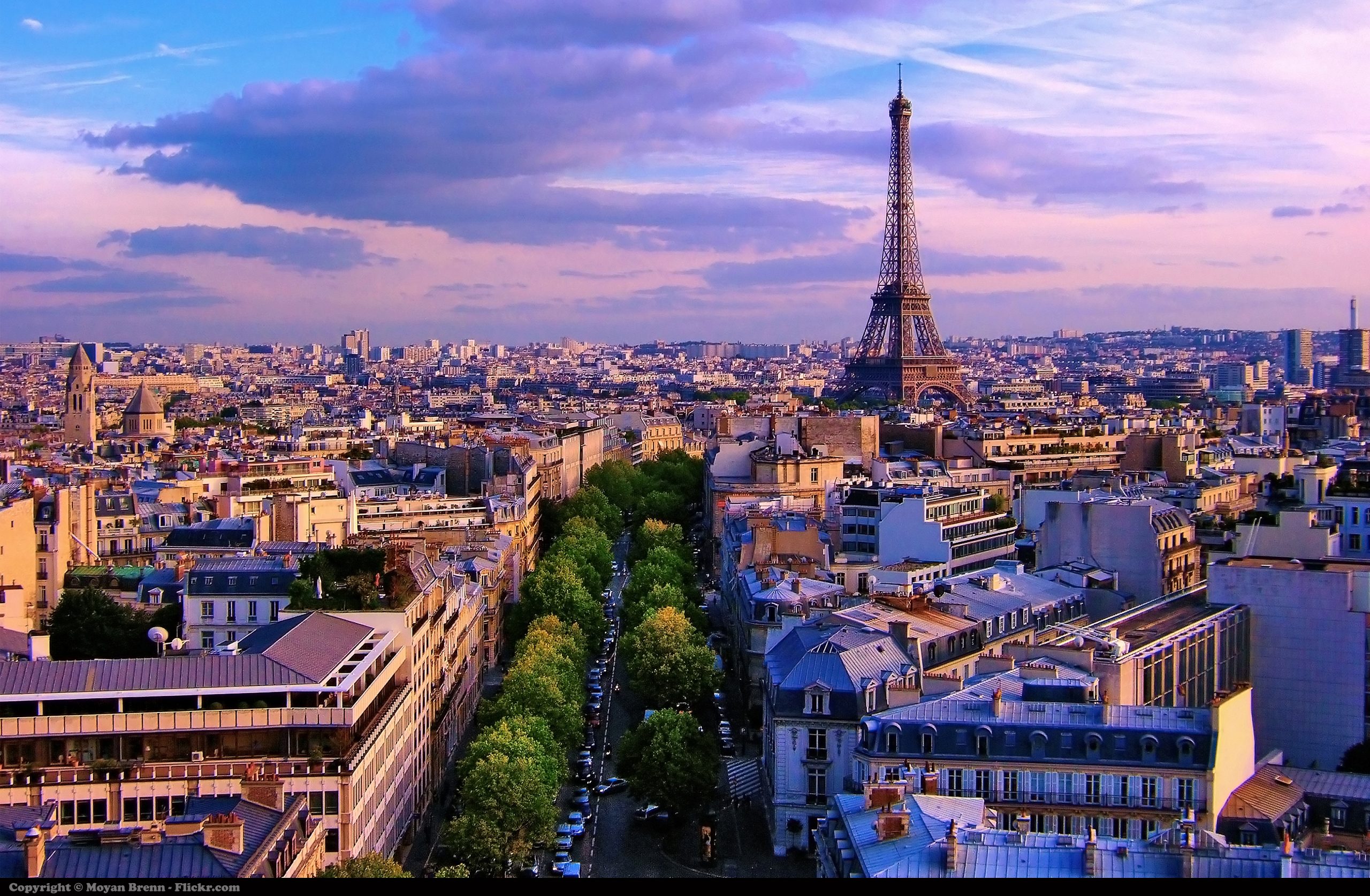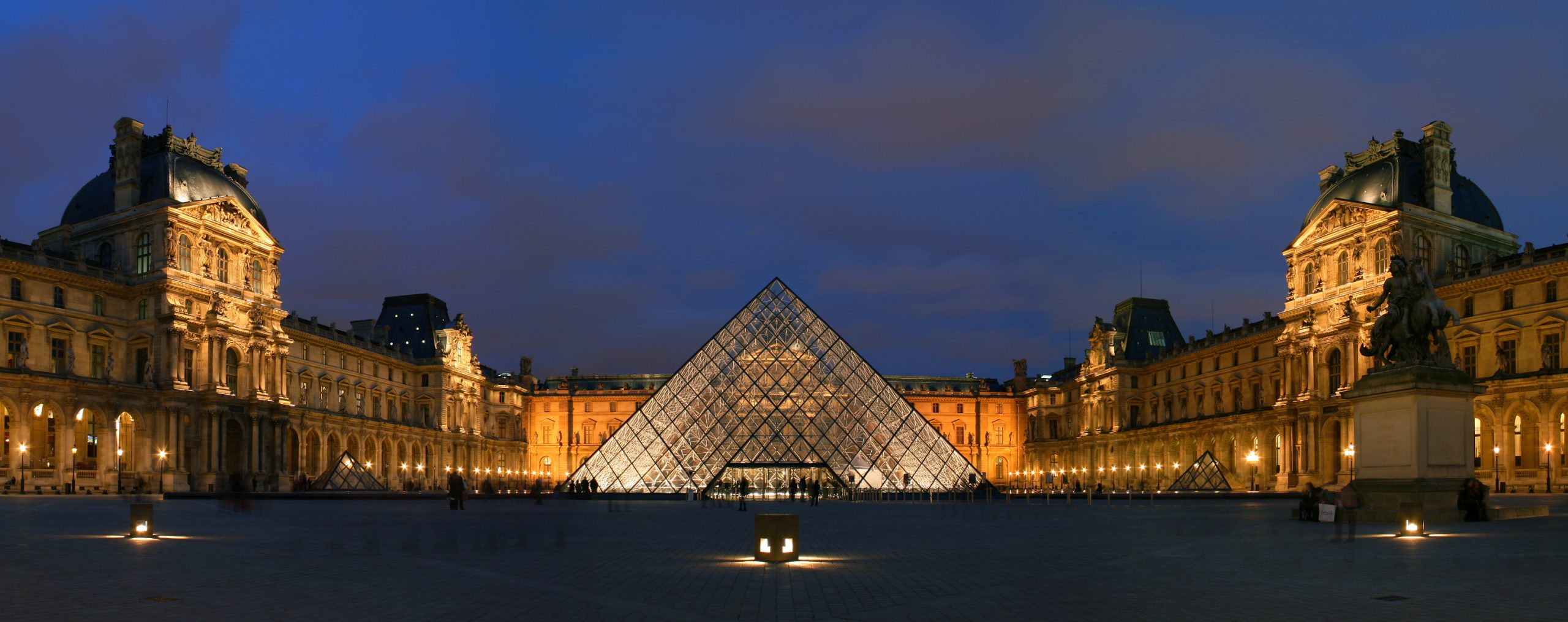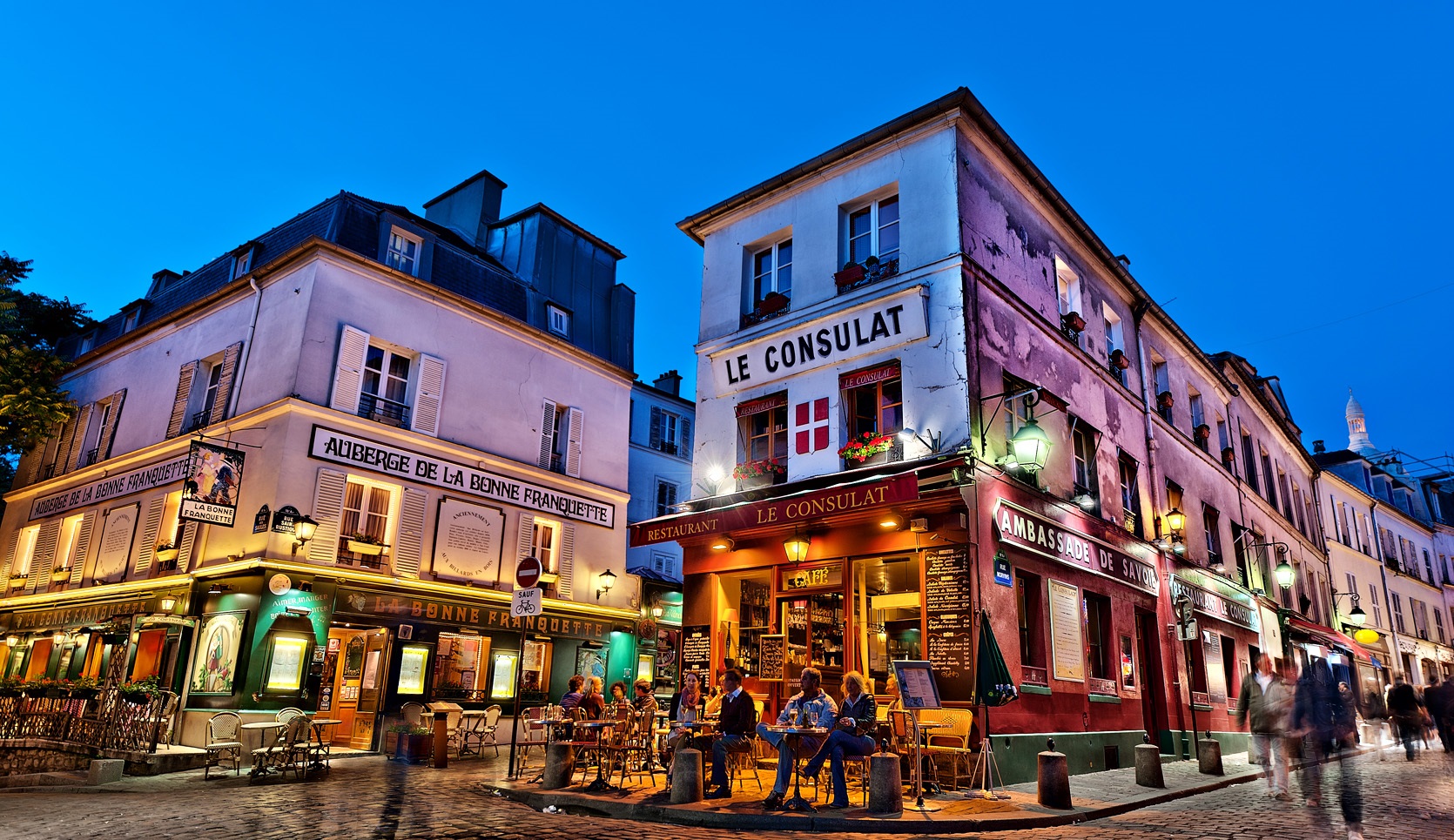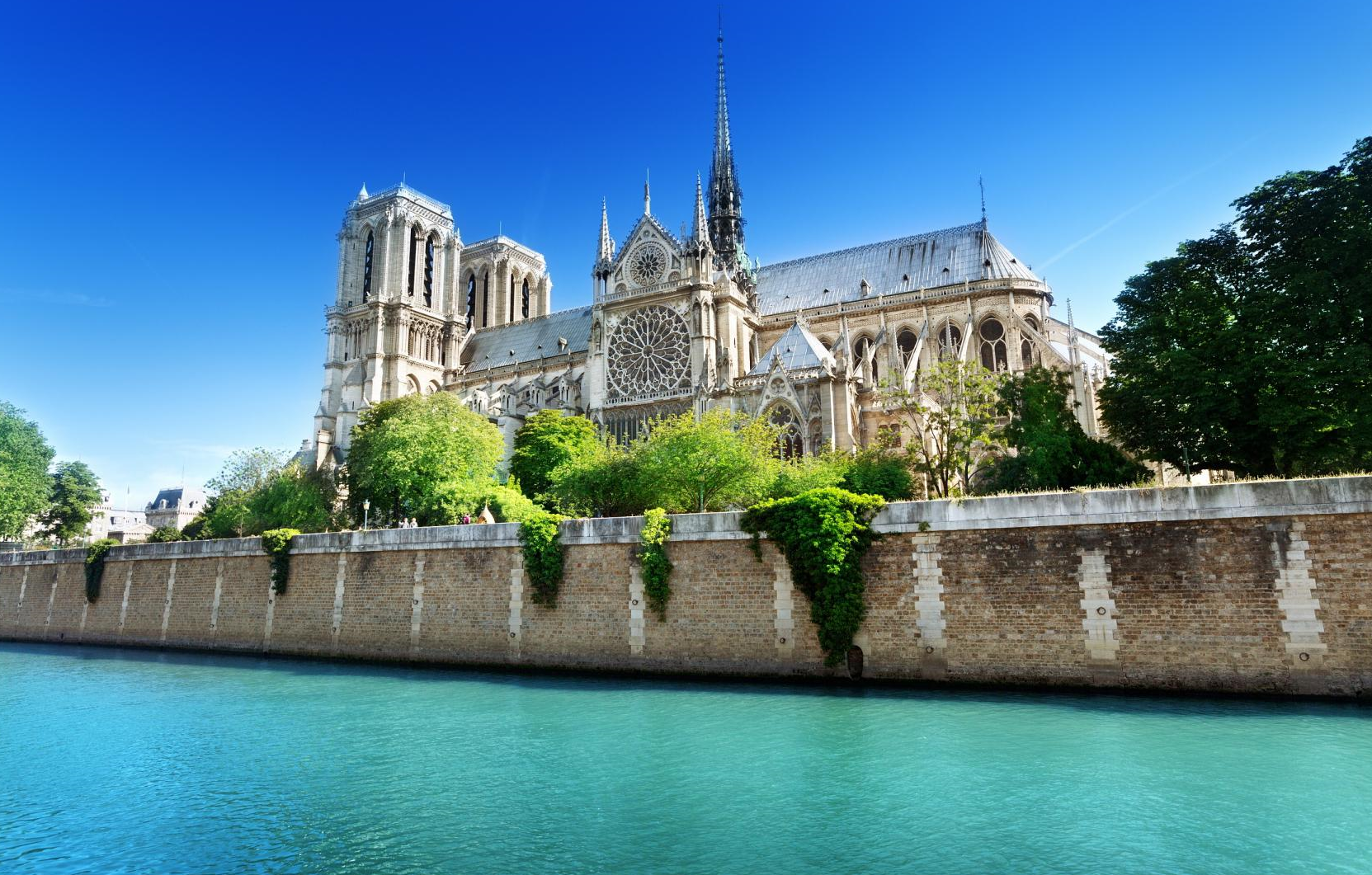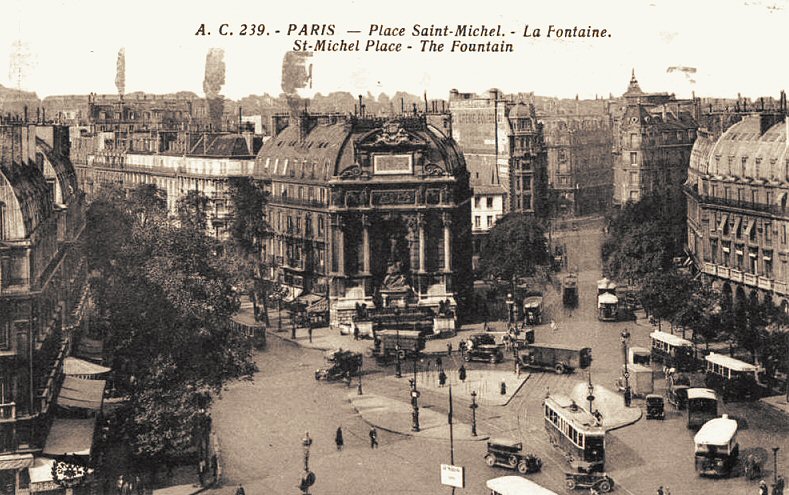
The Story Behind The Saint Michel Fountain
Just a stone’s throw from the Sainte Chapelle church is one of Paris’s most glorious “monumental” fountains that is surprisingly not as popular among tourists as other sights in the area—the Fontaine Saint-Michel. Although many guidebooks include the fountain in their sight-seeing recommendations, it usually doesn’t fall on traveler’s “must-see” lists for the City of Light, particularly for first-time visitors. That’s a shame, because a less-than-five-minute stroll from either Sainte-Chapelle or equality popular Notre Dame de Paris puts you directly on the charming Place de Saint-Michel, which is dominated by the gorgeous (and extremely photogenic) fountain at its southern end. It is also the starting point for our Latin Quarter Walking Tour.
The fountain was designed by architect Gabriel Davioud and constructed from 1858 to 1860 as part of the massive reconstruction of Paris under the direction of Emperor Napoleon III and oversight of the visionary urban planner Georges-Eugene “Baron” Haussmann. Davioud was largely responsible for crafting the accoutrements for Haussmann’s myriad public works projects, such as street furniture, pavilions, lampposts, signposts and other outdoor pieces, including several fountains.

Haussmann’s citywide efforts included installing a new grand boulevard on the Left Bank, now called the Boulevard Saint Michel, which in turn expanded the small, then-named Place Pont Saint-Michel into the much larger square Place Saint-Michel that exists today. Haussmann instructed Davioud to create a large monumental fountain—as well as to redesign the facades of the buildings surrounding the square—to spruce up this new public square.
Although Davioud originally intended to install a fountain in the center of the square, the city’s administrators instead asked him to build a large fountain to hide the end of the building at the corner of Boulevard Saint-Michel and Rue Saint-Andre des Arts, which the authorities deemed an eyesore.
Davioud’s final design relied on a façade divided into four horizontal levels, with Corinthian columns framing the central niche. It also caused some initial controversy and criticism because it was strikingly different from the monumental fountains installed as part of other Haussmann projects as it employed materials of several different colors rather than a single-colored stone: red and green marble, blue and yellow stone, and bronze statuary among them.
Another point of controversy surrounded the statue that was to be placed in the fountain’s central niche. At first, Davioud hoped to install a feminine statue of “Peace” in the spot, but Napoleon decreed the statue should honor him. Political opponents of the emperor reacted so vehemently to this proposal that Davioud suggested a compromise—a symbol of the Archangel Michael wrestling with the devil. City leaders, who controlled the purse strings to Haussmann’s projects, agreed and construction began in June 1858. The statue, sculpted by artist Francisque-Joseph Duret, was inaugurated in August 1860.

The fountain, which measures 85 feet by 50 feet, required the work of nine different sculptors: Henri Alfred Jacquemart crafted the two winged dragons on either side of the fountain; Duret sculpted the central figure of Saint Michael; Felix Saupin designed the rock under the statue of Saint Michael (this is where the water emerges from the fountain to descend into the series of pools below); bas-reliefs and ornamental foliage were crafted by Noemie Constant; and smaller statues representing the cardinal virtues were sculpted by Jean-Auguste Barre, Claude-Jean Guillaume, Louis-Valentin Robert, Charles-Alphonse Gumery, and August-Hyacinthe Debay.
Access to the fountain is free and available 24/7. Visitors to Sainte-Chapelle or Notre Dame can simply cross the Seine to the Left Bank; the Pont Saint-Michel leads directly from the Ile de la Cite to the Place Saint-Michel; the Petit Pont, nearer Notre Dame, puts one about a block east of the fountain. Metro station Saint-Michel and RER stop Saint Michel-Notre Dame provide access directly to the Place Saint-Michel.
Sorry, the comment form is closed at this time.


